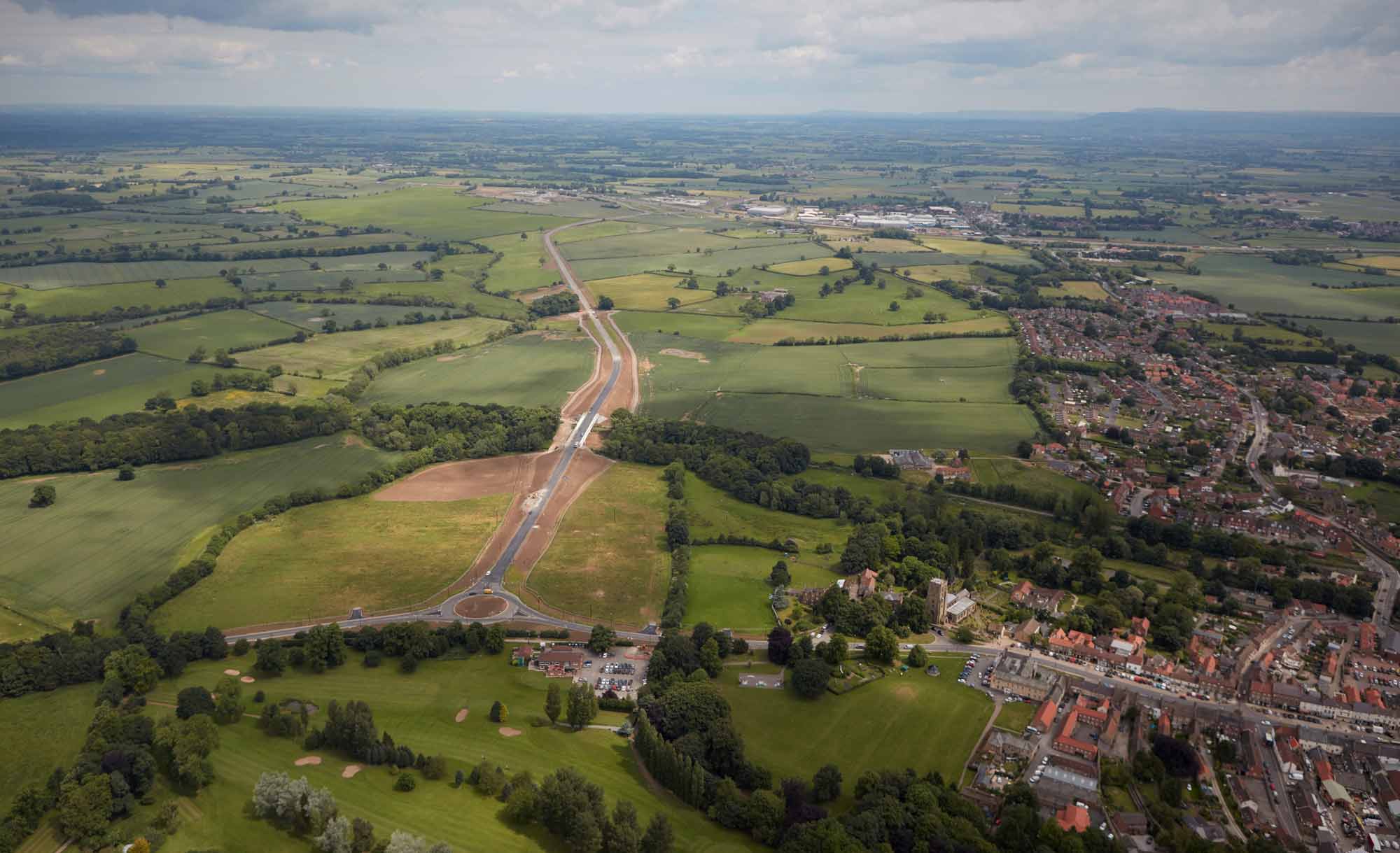Bedale bypass will open ahead of schedule on Thursday, 11 August, easing congestion in the town centre and improving the travel for residents, businesses and visitors.
The bypass is designed to reduce traffic flow through Bedale, Leeming Bar and Aiskew by half.
Currently, about 14,000 vehicles a day use the existing road, which causes considerable congestion.
In addition to cutting traffic through the urban area by half, the bypass will reduce environmental and road safety problems, improve access to the A1(M) for local communities and improve access to Leeming Bar industrial estate.
The bypass will be officially opened by Roads Minister Andrew Jones. He said:
The much-needed bypass will improve the community’s lives by cutting traffic, improving air quality and road safety. The tourist industry will also benefit as journey times to the beautiful Yorkshire Dales will be reduced.”
The government is making a record investment in roads, such as the Bedale bypass, speeding up people’s journeys and boosting the economy.
The bypass is about three miles long, running from Northallerton Road, on the eastern outskirts of Leeming Bar, to a new junction on the A684 near Bedale Golf Club. It crosses the A1(M) at approximately its midpoint, where it connects with the junction created as part of the Highways Agency’s A1 Dishforth to Barton upgrade.
Work began in February last year and has been finished about two months ahead of the anticipated completion in autumn this year. The bypass will be official opened by Andrew Jones, Minister for Transport.
The project, which was budgeted at about £34.5m is expected to come in under budget. The Department for Transport has provided £29m, with the County Council funding the rest from its capital programme. The contractor on the scheme was Wills Bros Ltd.
County Councillor Don Mackenzie, Executive Member for Highways, said:
The bypass has been long-awaited and will greatly reduce congestion in Bedale, as well as Leeming Bar and Aiskew.
It will make a huge difference to residents, businesses and tourists and is an example of the County Council’s commitment to improving road connections across the county to support the economy and make North Yorkshire a good place to live, work and visit.
The scheme is expected to come in under budget, which has been noted by the Department for Transport and the Treasury, as few major infrastructure schemes are delivered under budget. This is a fantastic piece of work delivered by Wills, Jacobs and North Yorkshire County Council.
Brown tourism signs have been erected on the approaches to the roundabout at the Bedale end of the bypass to encourage tourists to visit Bedale as part of their trip to the county. The market town will be an even more attractive place to explore following the reduction in through traffic.
County Councillor John Weighell, Member for Bedale, said:
Like me, local people will have watched Bedale bypass taking shape over the past 18 months, and I’m sure they will now be eager to use it to make their journeys easier. For businesses, it will improve access to the Leeming Bar Industrial Estate and for visitors will open up easier access to the Dales. For those living in Bedale, Leeming Bar and Aiskew, it will also improve road safety and the environment, particularly by reducing the traffic flow past homes in Aiskew.
The contractor has had to deal with some poor ground conditions particularly into the high embankments on the bridge approaches. The design caters for the settlement of these embankments over an extended period of time and the works programme allows for a future visit to smooth out the carriageway surface once settlement has ceased.
A Roman villa uncovered during the scheme has been designated as an ancient monument. The Aiskew villa is one of the most northerly in Britain and for a northern villa is exceptionally large and complex. It includes a main building with a wide range of features and a large complex of other buildings and enclosures.
The site was thoroughly explored and the finds are being assessed and catalogued. The site has provided well-preserved finds, including bone and ironwork, and could provide considerable information about a significant villa in third and fourth century Yorkshire. It is hoped some of the finds will be displayed locally and could be made available for schools to study.









